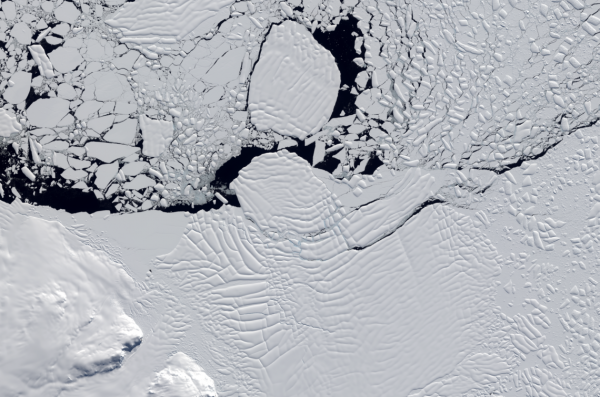An international team of researchers has combined satellite imagery and climate and ocean records to obtain the most detailed understanding yet of how the West Antarctic Ice Sheet — which contains enough ice to raise global sea level by 11 feet, or 3.3 meters — is responding to climate change.
The researchers, from the University of Washington, the University of Cambridge and the University of Edinburgh, found that the pace and extent of ice destabilization along West Antarctica’s coast varies according to differences in regional climate.
The study, published Jan. 16 in Nature Communications, shows that while the West Antarctic Ice Sheet continues to retreat, the pace of retreat slowed in a key region between 2003 and 2015. This slowdown was driven by ocean temperatures, which were in turn caused by variations in offshore winds.
Read more at: University of Washington
Landsat 9 satellite imagery shows the fractured front of the Crosson Ice Shelf in the Amundsen Sector of West Antarctica. The pace of the ice shelf’s retreat slowed in this region from 2003 to 2015. New research shows that changes in offshore winds brought less warm seawater into contact with the glacier.(Photo Credit: NASA/USGS and Frazer Christie/University of Cambridge)


